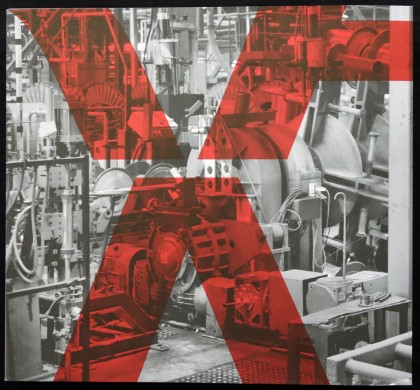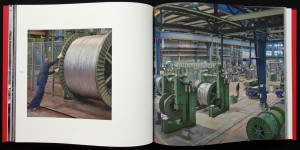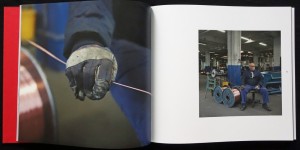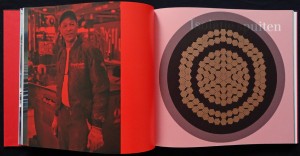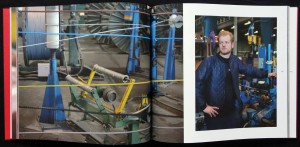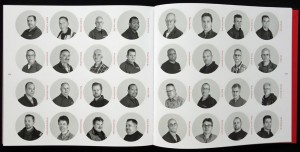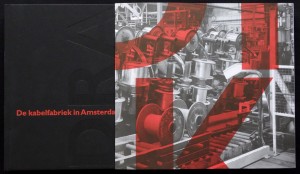Hamilton, David and Robbe-Grillet, Alain.
DREAMS OF A YOUNG GIRL.
NY: William Morrow and Co. 1971. Hamilton, David. First American edition. 4to., 143 pp., color and b&w photo graphs.
Portraits in pastoral setting, often provocative and nude of seminude. The first book by this photographer.
By SARAH BOXERMARCH 4, 1998
The people who need defending on principle are not always the ones you would actually want to defend. They may not be the worthiest people, or the nicest or the wittiest. Often they are mediocre or gross or self-aggrandizing. Think of Larry Flynt, the publisher of Hustler. Or Karen Finley, the performance artist best known for smearing her body with chocolate. Just because they are under siege legally doesn't mean they are worth the trouble of defending on other grounds.
Consider two photographers who have recently been called child pornographers. There is David Hamilton, whose book ''Age of Innocence'' (Arum Press) is full of simpering, soft-focus pictures of naked girls with budding breasts, paired with quotations about their forthcoming deflowering. And there is Jock Sturges, who posed nude, blond, teen-age girls and boys in ''Radiant Identities'' and ''The Last Days of Summer'' (Aperture). After Mr. Sturges's studio was raided seven years ago by Federal agents, a grand jury declined to indict him on charges of child pornography. He's back.
Mr. Hamilton and Mr. Sturges are on the public's mind these days thanks to Randall Terry, the conservative radio talk-show host and founder of the anti-abortion group Operation Rescue, who prodded his followers to locate prosecutors interested in pressing a case against Barnes & Noble for selling these photographers' books. The plan worked.
Last month, an Alabama grand jury indicted the company on 32 charges of child pornography for selling ''obscene material containing visual reproduction of persons under 17 years of age involved in obscene acts.'' Three months earlier, a Tennessee grand jury indicted Barnes & Noble on similar charges for displaying the two men's books without their plastic wrapping on shelves low enough for children to reach.
In a related incident, British police have seized one of Robert Mapplethorpe's books, which contains pictures of bondage and sadism, from the library of the University of Central England, in Birmingham. Calling it obscene, the police said they wanted to destroy the book, which survived an obscenity trial in Cincinnati 10 years ago.
This is great advertising for Mr. Hamilton and Mr. Sturges. Without the indictments, there wouldn't be much cause for writing about them now or much reason, esthetic or moral, for defending them. These two men are legal footnotes. That doesn't make them wonderful photographers.
You wouldn't know it from the shelves at Barnes & Noble. Last week, only days after the Alabama action was announced, the chain's store at Astor Place in the East Village was out of both Mr. Sturges's ''Radiant Identities'' and Mr. Hamilton's ''Age of Innocence.'' The store had one well-thumbed copy of Mr. Sturges's ''Last Days of Summer.'' And there were a few golf books by another David Hamilton. The shelves were disheveled. A clerk suggested there might be some copies of Mr. Sturges's and Mr. Hamilton's books on the tables of the men who regularly steal books from Barnes & Noble and sell them on the street.
The next stop was the bookstore at the International Center of Photography, on West 43d Street in Manhattan. There was ''Radiant Identities'' in a plastic wrapper. Finding Mr. Hamilton was still a problem, though. Three more bookstores were sold out. Finally a Barnes & Noble in Chelsea had two copies, both wrapped. (By the way, the plastic serves two purposes: It stops the prying eyes of curious children and keeps the potential purchaser from discovering what trash it is.)
''The Age of Innocence'' is the essence of icky. The author could certainly be considered a dirty old man. (He has a Web site offering peeks of pubescent bodies under the headings ''Fantasies of Girls'' and ''Dreams of a Young Girl,'' and he has made soft-core flicks like ''First Desires'' and ''Tender Cousins.'') ''The Age of Innocence'' is full of photographs of girls in bed, looking dreamy and spent, with their fingers in their mouths or in their underpants. All look willing, and almost all have exactly the same small breasts.
In the final pages of the book, Mr. Hamilton writes, fantasizing: ''In her daydreams she thinks about this man who will one day come to her in answer to her questions. Perhaps he is a prince, a knight on a white stallion, a man in military uniform. . . . She is lovely, our nymph, and her potential is infinite. Heaven grant her the man who is worthy of her, and who comes to her bringing sex with tenderness. She has her virginity and her innocence; she will, if she is fortunate, trade them in due course for experience and love.'' The words are accompanied by pictures of a teen-age girl being carried around by a teen-age boy, who, on the final page, is bending over her.
Mr. Sturges is not nearly as nauseating. In fact, museums and galleries seem to like him. Many of his models are ''naturists,'' nudists he knows in France. All of them, he notes, have given their consent, and most of them happen to be blond-haired, blue-eyed girls with small breasts. He likes to photograph them sprawling on towels with sand stuck to their bottoms, or showering together. Some look straight at the photographer, and some shut their eyes. They are ornaments for the beach and the blanket.
His photographs, though often vacant, invite gushing interpretation. In the introduction to ''Radiant Identities,'' the photography critic A. D. Coleman argues that Mr. Sturges's photographs of bodies ''poised on the cusp of change'' are ''metaphors of metamorphosis.'' In ''The Last Days of Summer,'' Jayne Anne Phillips writes about one of Mr. Sturges's subjects, a nude girl lying across the couch: ''she is an image of Christ, of crucifixion, of conscious sacrifice and sorrow . . . a child offered up as Christ was offered.'' Then again, maybe she is just a J. Crew model with no clothes to sell.
Not all photographers of exposed children have wasted their time on such bland shots. Sally Mann, the author of ''Immediate Family,'' is known for photographing her own children with insect bites on their arms and Popsicle juice running over their genitals. She took a picture of her youngest child, Virginia, sleeping on a wet spot on the mattress. It's slyly disturbing, but hardly titillating.
Lewis Carroll photographed lots of rakish and waifish children with their clothes memorably ripped and a look of defiance on their faces. Despite his trespasses, the children appear to have some existence beyond his fantasy. The pictures are intriguing and complex, the kind you might actually want to defend.
Someone should defend Mr. Sturges and Mr. Hamilton legally. Esthetically, they're on their own.
See also
Dutch Books of Nudes Alessandro Bertolotti Sanne Sannes Anthon Beeke Ed van der Elsken Ginger Gordon Diana Blok Graphic Design Typography Photography
Met David Hamilton sterven ook de seksuele mores van de jaren zeventig
De Britse fotograaf was vermaard om zijn soft focus plaatjes van pubermeisjes.Coen van Zwol
28 november 2016 om 10:12
David Hamilton in 1983 voor de poster van zijn erotische film ‘First Desires’.
Foto Pierre Verdy / AFP
De bekende Britse fotograaf van pubermeisjes David Hamilton is vrijdagavond op 83-jarige leeftijd dood in zijn appartement in Parijs gevonden. Hij pleegde zelfmoord, volgens de politie, aldus Le Monde, na een wekenlang schandaal.
Vorige maand schreef de nu 42-jarige Franse presentatrice Flavie Flament in haar geromantiseerde memoires ‘La Consolation’ hoe ze als dertienjarige was verkracht door een wereldberoemd fotograaf in naturistenkolonie Cap d’Agde. Op de kaft stond David Hamiltons foto van haar uit 1987. Na die weinig subtiele hint werd Hamilton in een talkshow met naam en toenaam van verkrachting beticht. Twee weken geleden kwam tijdschrift L’Obs met drie anonieme, indertijd eveneens minderjarige ex-modellen met soortgelijke verhalen, waarna Flament de fotograaf rechtstreeks beschuldigde.
Onverwachts was het allemaal niet: David Hamilton maakte geen geheim van zijn pedofiele inclinaties. Hij brak begin jaren zeventig door, toen porno mainstream werd en pedofilie spoedig leek te volgen. In 1977 gaf Roman Polanski toe schuldig te zijn aan illegale seks met een minderjarige, de 13-jarige Samantha Geimer. De aanklacht was verkrachting. Playboy en Penthouse zetten de elfjarige Eva Ionescu naakt op de voorpagina, Louis Malle vierde triomfen met Pretty Baby, met Brooke Shield als kindprostituee in New Orleans.
Toevluchtsoord Frankrijk
En geen land was zo ruimdenkend als Frankrijk, Polanski’s toevluchtsoord na zijn vlucht uit Hollywood. David Hamilton woonde daar toen al. Hij onderbrak op zijn twintigste zijn studie architectuur in Londen om in Parijs vormgever te worden bij tijdschrift Elle, en daarna art director van warenhuis Printemps. Als fotograaf ontwikkelde hij in de loop van de jaren zestig zijn kenmerkende softfocus-stijl. ‘Flou hamiltonien’, zo heette het.
Zijn fetisj waren blonde, blauwogige, bleke en dromerige meisjes van twaalf, dertien jaar. Op zijn fotoboek ‘Dreams of a Young Girl’ in 1970 volgde een serie inwisselbare fotoboeken met miljoenenoplagen, waarin zonlicht diffuus door vitrages viel op hun slaperige lichamen. Bloemen en kreukelige lakens hoorden erbij. En tenenkrullende onderschriften, literair en klef erotisch zinspelend op de spoedige ontmaagding van zijn ‘nimfen’. Na het succes van Bilitis (1977) maakte Hamilton nog vier speelfilms, of bewegende plaatjesboeken, waarin speelse nimfen in een wazige zomer ontmaagd worden door een rijpe minnaar.
In de minder tolerante tijden die volgden trok Hamilton wat meer in zijn schulp. Hij shuttelde tussen Parijs en St Tropez, was getrouwd met twee ex-modellen, en leefde van zijn royalties terwijl zijn stijl uit de mode raakte, en daarna in diskrediet. Vooral in de preutse Angelsaksische wereld. In 1998 werd zijn bestseller Age of Innocence tot kinderpornografie verklaard in de staat Alabama. Liberalen schoten met dichtgeknepen neuzen te hulp; Hamilton zelf noemde zijn oeuvre in een interview erotisch, maar zeker geen porno. Het was allemaal jaloezie van ‘the great unlaid’, spotte hij.
Jacht op pedofielen
Maar de tijden werden er niet milder op. In het Verenigd Koninkrijk kreeg de jacht op pedofielen, in de jaren tachtig ingezet, een nieuwe impuls door het schandaal rond BBC-presentator en serieverkrachter Jimmy Saville, terwijl Graham Ovenden, eens gerespecteerd schilder van naakte meisjes, in 2013 werd veroordeeld voor seksueel misbruik – vorig jaar oordeelde een Britse rechter dat zijn privécollectie foto’s en schilderijen vernietigd moest worden.
Maar in Frankrijk voelde Hamilton zich veilig. „De feministen hebben me hier altijd met rust gelaten”, zei hij in 2015 in Gala. Omdat ze inzagen dat zijn werk kunst was, en ‘ver af stond van de vulgariteit van deze tijd’.
Met de affaire-Flament, breed uitgemeten in de Franse pers, leek ook zijn laatste bastion geslecht. Hamilton ontkende, stelde dat Flavie Flament uit was op „15 minuten roem”, dreigde met een smaadproces. In plaats daarvan benam hij zich vrijdag van het leven, hoewel zijn misdaad onder de Franse wet verjaard was. Een laffe daad, vindt Flament, niet rouwig over de dood van de man die „haar eerste keer stal”. „De horreur van zijn daad zal nooit onze slapeloze nachten uitwissen.”
Hoe vier krankzinnige jaren bijna alles in de samenleving veranderden
Sixties In het V&A Museum in Londen kun je zien hoe ongeveer alles is veranderd door vier krankzinnige jaren: 1966-1970.
Sandra Smallenburg
25 september 2016
Het is een beduimeld stukje papier dat in een vitrine van het Londense V&A Museum hangt, op de pas geopende tentoonstelling You Say You Want a Revolution? Records and Rebels 1966-1970. Toch vormen de slordig geschreven zinnen vol doorhalingen, die schuin over het papier lopen, een document van historische waarde. Ze werden in 1966 door John Lennon geschreven vlak nadat hij een lsd-trip had gemaakt. ‘Turn off your mind, relax and float downstream’, zo staat er in haast onleesbare hanenpoten. Het is de beroemde eerste regel van ‘Tomorrow Never Knows’, de psychedelische soundscape waarmee het Beatles-album Revolver eindigt.
Dankzij dit nummer maakten in 1966 miljoenen jongeren wereldwijd kennis met de geestverruimende werking van lsd. Lennon was sterk beïnvloed door het boek The Psychedelic Experience (1964) van de Californische drugsgoeroe Timothy Leary toen hij de songtekst schreef. Hij zou passages uit het boek op tape hebben gezet en die gedraaid hebben tijdens zijn acidtrip. ‘Put down all thought, await the shining void’, schreef hij herhaaldelijk op het A4’tje, een zin die later in de officiële songtekst werd veranderd in ‘Lay down all thoughts, surrender to the void’. Het voelt intiem, om hier met je neus op Lennons priegellettertjes te mogen staan. Dichter bij de oorsprong van een historische revolutie kun je haast niet komen.
THE WHOLE EARTH CATALOGUE
Hét tijdschrift voor de tegencultuur, in 1968 in Californië uitgegeven door Steward Brand. Bevatte een schat aan handige informatie voor mensen die communes wilden stichten. Zoals waar je de beste kerosinelampen kon kopen, welk boek over geiten houden je zou moeten lezen en hoe je zelf een koepelwoning à la Buckminster Fuller kon bouwen. De suggesties kwamen van lezers uit heel Amerika, waarmee het een van de eerste vormen van ‘crowdsourcing’ was. Meer netwerk dan boek, werd The Whole Earth Catalogue later door Steve Jobs geprezen als ‘Google in paperbackvorm’ en ‘de Bijbel van mijn generatie’. Diezelfde Steve Jobs zei overigens dat het gebruiken van lsd „een van de twee of drie belangrijkste dingen” was die hij in zijn leven had gedaan.
De jaren vijftig, zo zei Bob Dylan eens, eindigden pas in 1965. In Groot-Brittannië waren homoseksualiteit en abortus op dat moment nog illegaal. De doodstraf bestond er nog. De pil werd alleen verstrekt aan getrouwde vrouwen, scheiden was haast onmogelijk. Racisme was aan de orde van de dag. In de VS waren gemengde huwelijken tot 1967 verboden. Maar in 1970, slechts 1.826 dagen later, zag alles er anders uit, zo schrijven de samenstellers van de tentoonstelling in de catalogus. Er had een ‘youthquake’ plaatsgevonden. De baby’s die vlak na de oorlog massaal geboren waren – in Engeland alleen al waren dat er meer dan een miljoen in 1947 – hadden zich ontpopt toch opstandige tieners. Er was een nieuwe, idealistische generatie opgestaan die wilde breken met zo’n beetje alles wat hun ouders hadden opgebouwd.
COLLAGE ROBERT RAUSCHENBERG VOOR EARTH DAY
Op 22 april 1970 werd in Amerika de eerste Earth Day gehouden, een dag waarop op duizenden scholen en universiteiten werd stilgestaan bij de toekomst van de aarde. In de diverse staten kwamen in totaal 20 miljoen mensen bijeen om te demonstreren tegen milieuproblemen. De bekende pop-artkunstenaar Robert Rauschenberg ontwierp het affiche, een collage met foto’s van bedreigde diersoorten en milieurampen.
De expositie Records and Rebels wil laten zien wat voor impact die bevrijdende periode van 1966 tot 1970 op onze huidige samenleving heeft gehad. Talloze maatschappelijke veranderingen die we nu gewoon vinden, zoals gelijke rechten voor vrouwen, homo’s en zwarten, werden in die jaren bevochten. Het was een tijd waarin de middenklasse massaal drugs begon te gebruiken, een periode die de geboorte zag van de milieubeweging, van rockfestivals, macrobiotisch eten, communes, new-agefilosofieën, de eerste Apple-computer. En vooral: een tijd waarin een gezond wantrouwen tegen het establishment begon te groeien.
HAIR PEACE EN BED PEACE
De foto van de Bed-In die Yoko Ono en John Lennon in 1969 ter promotie van de wereldvrede hielden in suite 702 van het Amsterdamse Hilton Hotel is wereldberoemd. Maar op de zwart-witfoto is niet te zien dat de tekstborden met daarop de leuzen ‘Hair Peace’ en ‘Bed Peace’ eigenlijk geel waren. Die originele borden, uit de collectie van Yoko Ono, hangen nu in het V&A Museum. Aandoenlijk amateuristisch zijn ze, met lichtbruine vlekken waar de plakbandjes zaten.
Witte fiets zonder slot
THRONE (2004) SAM DURANT
Huey Newton, een van de leiders van de Black Panther Party, werd in september 1968 onterecht veroordeeld voor de moord op een politieagent in Oakland een jaar eerder. Hij werd later vrijgesproken. Op een beroemd portret staat de zwarte leider afgebeeld op een rieten troon. De Amerikaanse kunstenaar Sam Durant maakte in 2004 een bronzen replica van die troon, getiteld Monument for the Alameda County Courthouse. De titel verwijst naar de plek waar veel Black Panthers terechtstonden in de jaren zestig.
De tentoonstelling focust op de ontwikkelingen in Swinging Londen en de Amerikaanse westkust, op de minirokken van Twiggy dus, en de hippies van Haight-Ashbury. En passant worden ook revoluties in andere regio’s aangestipt, zoals de studentenopstanden in Parijs in 1968, de demonstraties van de zwarte bevolking in het Diepe Zuiden van de VS en zelfs Mao’s culturele revolutie in China. De Nederlandse Provo-beweging komt ook zijdelings aan de orde, in de vorm van een replica van een witte fiets die achteloos tegen een wand geparkeerd staat – uiteraard zonder slot.
Meer dan 350 objecten vullen de overvolle zalen – posters, kostuums, boeken, flyers, foto’s, schilderijen, films, tarotkaarten, elpeehoezen – en schetsen zo een beeld van de tegencultuur. De twee samenstellers, V&A-conservatoren Victoria Broackes en Geoffrey Marsh, maakten eerder de zeer succesvolle David Bowie-tentoonstelling. Net als die expositie is ook Records and Rebels een multimediale show, waar iedere bezoeker een koptelefoon krijgt met een interactieve soundtrack die zich aanpast aan de looproute. Hoor je bij binnenkomst nog de zoete tonen van Simon & Garfunkels ‘The Sound of Silence’ uit 1964, een zaal verder toetert al ‘My Generation’ (1965) van The Who door de koptelefoon, terwijl je door een bordkartonnen versie van Carnaby Street loopt, het hart van The Swinging City.
RUIMTEPAK WILLIAM ANDERS
Als astronaut aan boord van Apollo 8 maakte William Anders in 1968 voor het eerst een foto van de ‘blauwe planeet’, de aarde. De foto werd later door Life Magazine verkozen tot een van de honderd belangrijkste foto’s van de twintigste eeuw. In Londen is het originele maanpak van Anders te zien. Ernaast: een stuk maansteen dat V&A in bruikleen kreeg van NASA.
Bij de entree van de tentoonstelling heb je dan al de eerste tekenen van verzet kunnen zien. Daar ligt bijvoorbeeld het dagboek van de Amerikaanse folkzanger Woody Guthrie in een vitrine. In nette blokletters schreef hij in 1944: ‘Op mijn Gibson gitaar heb ik een kreet geschilderd, die luidt: This Machine Kills Fascists. En ik meen ieder woord dat daar staat.’ Op je koptelefoon hoor je intussen Sam Cookes ‘A Change is Gonna Come’, een lied dat hij in 1964 schreef nadat hij en zijn vrouw vanwege hun huidskleur geweigerd waren bij de Holiday Inn in Shreveport, Louisiana. Het werd het lijflied van de burgerrechtenbeweging.
Ook in die eerste zaal ligt, heel onopvallend, een kostbaar kleinood: een originele versie van Thomas Mores Utopia uit 1516. Het is dit jaar precies vijfhonderd jaar geleden dat de Engelse humanist daarin zijn ideale samenleving beschreef, als een eiland waar verschillende religies in vrede naast elkaar kunnen bestaan en waar iedereen gelijke rechten heeft. Zo maakt Records and Rebels meteen duidelijk waartoe deze tentoonstelling de bezoeker wil inspireren: dromen van een betere wereld. Om dat te benadrukken staat er in koeienletters een slogan van Margaret Mead op de muur, de Amerikaanse cultureel antropologe die een belangrijke woordvoerder was van de seksuele revolutie: ‘Twijfel er nooit aan dat een kleine groep van nadenkende, toegewijde burgers de wereld kan veranderen.’
Mick Jagger zei het zo, in 1968 in een interview met de International Times, het lijfblad van de tegencultuur: „Ik ben geïnteresseerd in het idee van een alternatieve samenleving die voortkomt uit de ontwikkelingen van de afgelopen paar jaren. Niet een specifiek hippieding of een drugsding, maar een algemene herevaluatie van zaken waar mensen zich mee bezighouden. Ik denk dat dit het einde betekent van de ene maatschappij en het begin van een andere, in plaats van alleen maar de oude maatschappij in een nieuwe te veranderen.”
Veel platgetreden paden
De sixties vormen een periode die al vaak in beeld is gebracht. Ook Records and Rebels heeft daaronder te lijden en slaat regelmatig platgetreden paden in. Het is een tentoonstelling die sterk teert op nostalgie en fandom. Dat zie je ook aan het publiek, dat voor een groot deel bestaat uit babyboomers, sommigen nog altijd met lang haar en met dampende e-sigaret in de hand. Ze vergapen zich aan de relieken van hun helden die als juwelen worden uitgelicht: het ziekenfondsbrilletje van John Lennon, het sexy pakje dat Jane Fonda droeg in de film Barbarella (1968), de brokjes gitaar die restten van het optreden dat Jimi Hendrix gaf op 4 juni 1967 in het Londense Saville Theatre.
In de zaal die de politieke opstanden in 1968 in beeld brengt, wordt de chaos je haast te veel. Boven je hoofd draaien de wieken van een helikopter, terwijl op je koptelefoon geweerschoten klinken. Beelden tonen protesterende studenten, posters schreeuwen om gelijke rechten voor vrouwen en homoseksuelen. Een gekmakende chaos is het, maar ook een doeltreffende manier om duidelijk te maken hoe snel de ontwikkelingen elkaar opvolgden, in die woelige late jaren zestig.
Het is moeilijk om in die overdaad aan beeld, geluid en vloeidia’s te onderscheiden wat nu de werkelijk waardevolle stukken zijn. Want die zijn er zeker: er hangen originele kunstwerken van Bridget Riley en David Hamilton, en een indrukwekkende mandala van de Duitse fijnschilder Mati Klarwein, favoriet kunstenaar van Andy Warhol en beroemd vanwege zijn vele psychedelische hoesontwerpen.
Ook nuttig is de toevoeging van een affiche van Jugendstil-kunstenaar Alphonse Mucha. Daardoor snap je opeens waar de hippies hun druiperige, amoebe-achtige letters en hun bloemenpracht vandaan hadden: van zijn zwierige art nouveau.
Net als de Bowie-tentoonstelling eindigt ook Records and Rebels met een spektakelstuk. Bij Bowie was dat een zaal waar je op videoschermen een legendarisch concert kon bijwonen, hier word je ondergedompeld in het festivalgevoel van Woodstock. Liggend in zitzakken, of op het hoogpolige groene tapijt, is treffend de sfeer van een festivalweide nagebootst. Op drie grote videoschermen speelt The Who nogmaals ‘My Generation’, terwijl in vitrines de artefacten van Woodstock staan opgesteld: de kapotgeslagen gitaar van Pete Townsend, het westernjasje met slierten van Roger Daltrey. Het is theatraal, maar het werkt. Als je even later op de tonen van Lennons ‘Imagine’ de show verlaat, krijg je spontaan zin in een joint en een nieuwe summer of love.
















